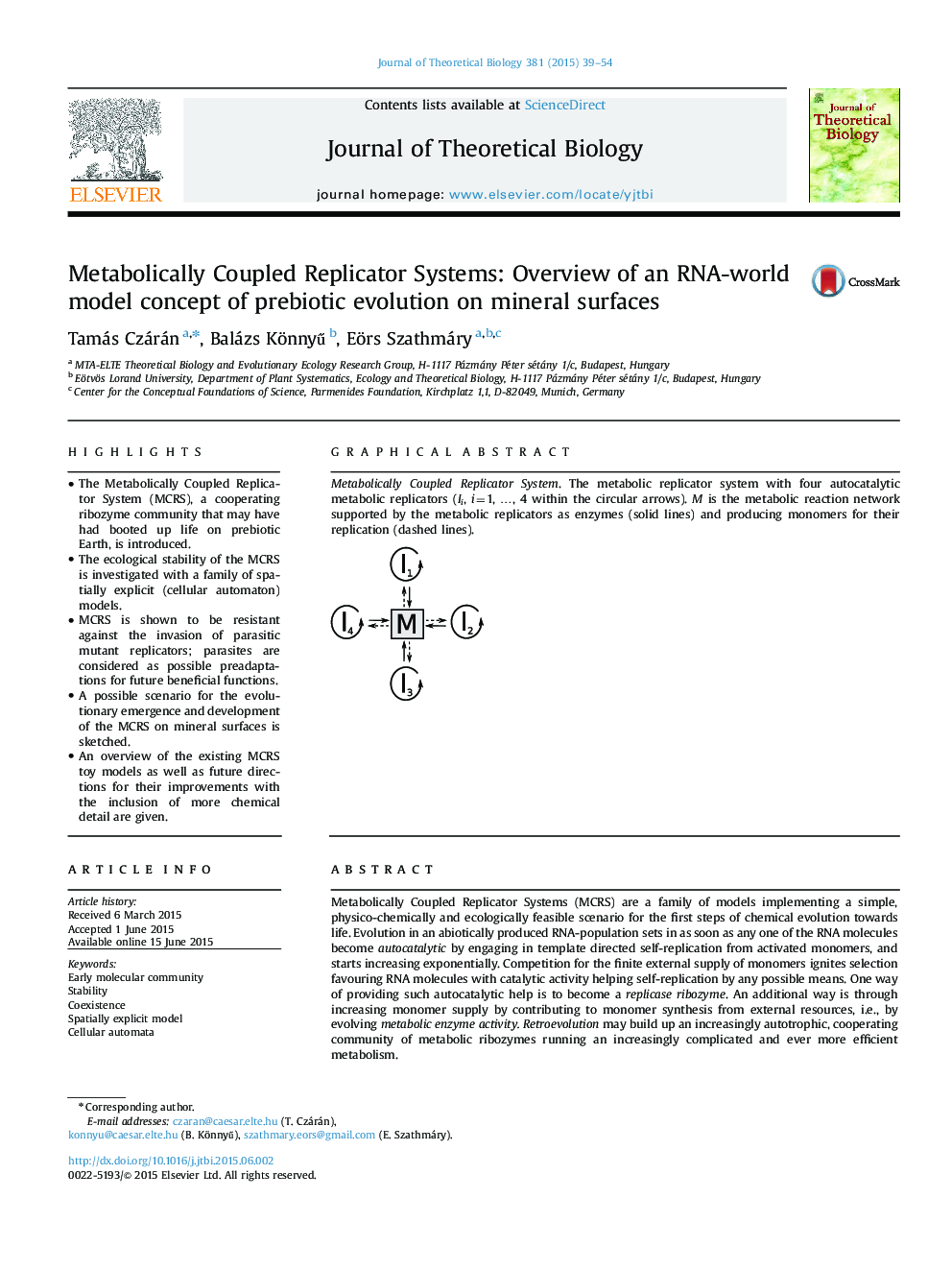| کد مقاله | کد نشریه | سال انتشار | مقاله انگلیسی | نسخه تمام متن |
|---|---|---|---|---|
| 4496013 | 1623829 | 2015 | 16 صفحه PDF | دانلود رایگان |

• The Metabolically Coupled Replicator System (MCRS), a cooperating ribozyme community that may have had booted up life on prebiotic Earth, is introduced.
• The ecological stability of the MCRS is investigated with a family of spatially explicit (cellular automaton) models.
• MCRS is shown to be resistant against the invasion of parasitic mutant replicators; parasites are considered as possible preadaptations for future beneficial functions.
• A possible scenario for the evolutionary emergence and development of the MCRS on mineral surfaces is sketched.
• An overview of the existing MCRS toy models as well as future directions for their improvements with the inclusion of more chemical detail are given.
Metabolically Coupled Replicator Systems (MCRS) are a family of models implementing a simple, physico-chemically and ecologically feasible scenario for the first steps of chemical evolution towards life. Evolution in an abiotically produced RNA-population sets in as soon as any one of the RNA molecules become autocatalytic by engaging in template directed self-replication from activated monomers, and starts increasing exponentially. Competition for the finite external supply of monomers ignites selection favouring RNA molecules with catalytic activity helping self-replication by any possible means. One way of providing such autocatalytic help is to become a replicase ribozyme. An additional way is through increasing monomer supply by contributing to monomer synthesis from external resources, i.e., by evolving metabolic enzyme activity. Retroevolution may build up an increasingly autotrophic, cooperating community of metabolic ribozymes running an increasingly complicated and ever more efficient metabolism.Maintaining such a cooperating community of metabolic replicators raises two serious ecological problems: one is keeping the system coexistent in spite of the different replicabilities of the cooperating replicators; the other is constraining parasitism, i.e., keeping “cheaters” in check. Surface-bound MCRS provide an automatic solution to both problems: coexistence and parasite resistance are the consequences of assuming the local nature of metabolic interactions. In this review we present an overview of results published in previous articles, showing that these effects are, indeed, robust in different MCRS implementations, by considering different environmental setups and realistic chemical details in a few different models. We argue that the MCRS model framework naturally offers a suitable starting point for the future modelling of membrane evolution and extending the theory to cover the emergence of the first protocell in a self-consistent manner. The coevolution of metabolic, genetic and membrane functions is hypothesized to follow the progressive sequestration scenario, the conceptual blueprint for the earliest steps of protocell evolution.
Metabolically Coupled Replicator System. The metabolic replicator system with four autocatalytic metabolic replicators (Ii, i=1, …, 4 within the circular arrows). M is the metabolic reaction network supported by the metabolic replicators as enzymes (solid lines) and producing monomers for their replication (dashed lines). Figure optionsDownload as PowerPoint slide
Journal: Journal of Theoretical Biology - Volume 381, 21 September 2015, Pages 39–54